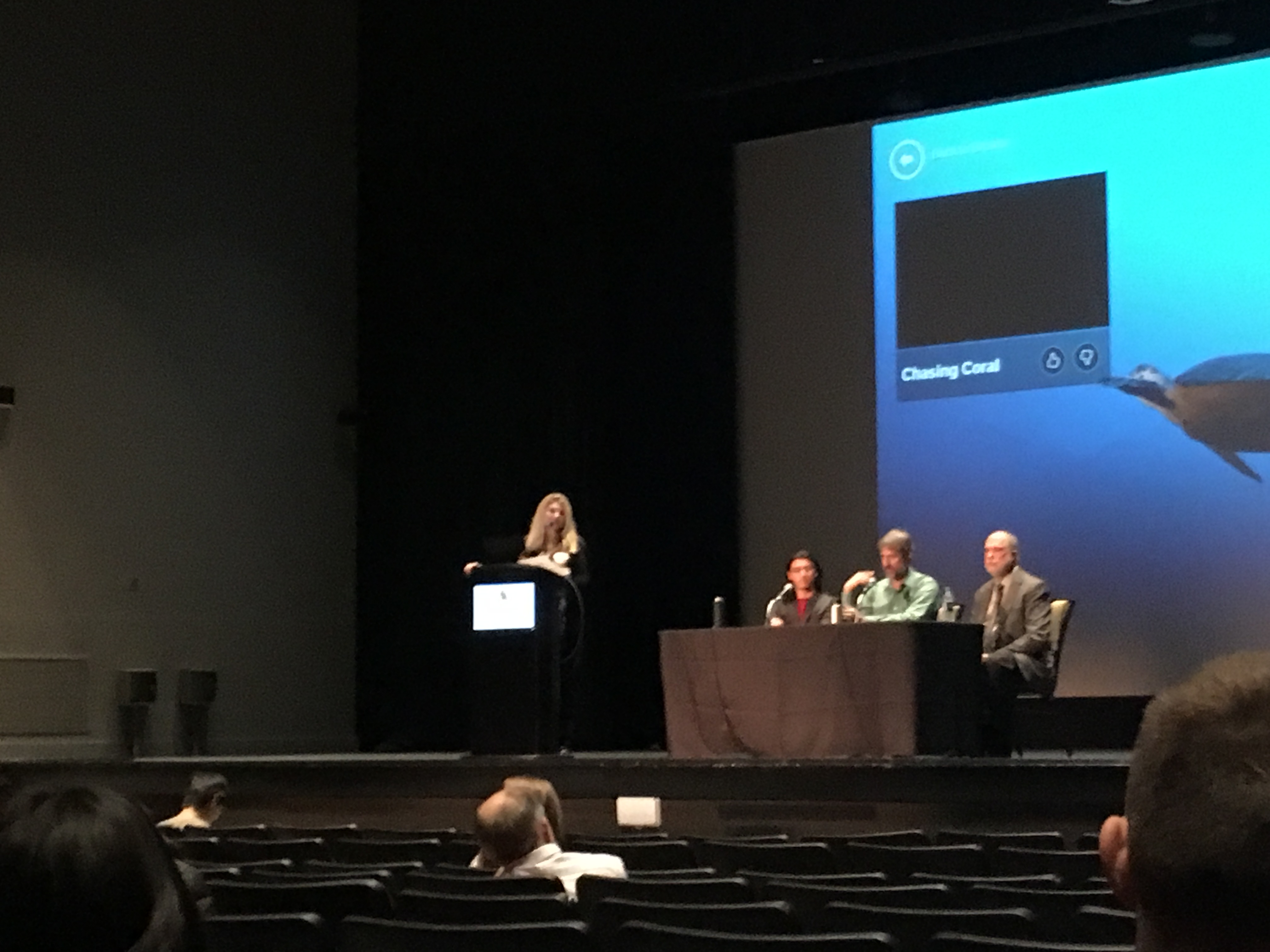By Greta Easthom
For The Diamondback
University of Maryland students and community members had an opportunity Wednesday to learn more about the world’s vanishing coral reefs during a documentary showing.
The award-winning Netflix documentary, entitled “Chasing Coral,” showcases the alarming 50 percent death rate of reefs in the past 30 years due to climate change. The movie was filmed over the course of three years.
About 60 people attended the screening in Stamp Student Union’s Hoff Theater, which was followed by a panel discussion with the film’s director, Jeff Orlowski, and Mark Eakin, a coral reef specialist with the National Oceanic and Atmospheric Association and Thomas Ackerman, a climate expert and professor at the University of Washington.
“My team and I were fascinated by the question of how do you create visual evidence of climate change,” Orlowski said. “Not just showing statistics and numbers and charts, but how do you make it more accessible to the average viewer.”
Orlowski also directed “Chasing Ice,” an Emmy-winning documentary on environmental photographer James Balog’s effort to depictdecreasing glacier rates.
“Oceans are the story of climate change,” Orlowski said.
The documentary featured Richard Vevers, the founder of The Ocean Agency, and used time-lapse technology to track decaying reefs off the coasts of the Carribean and Hawaii, as well as the Great Barrier Reef off the coast of Australia.
The footage showed corals degenerating from their vibrant hues into a sickened white, a process referred to in the film as “coral bleaching.” The process is initiated when corals are stressed by changes in conditions such as light, increased temperature or nutrients, according to the National Ocean Service.
“As carbon dioxide is increased in the atmosphere and the warming of the ocean has been accelerated, we’ve seen a real change where climate change is the main driver of impacting coral reefs,” Eakin said. “Ocean acidification is of course tied to increasing carbon dioxide levels which slows the rate of growth of corals.”
The documentary is being shown all over the world, including Barcelona, Kenya and England.
Junior Savannah Shaul, an atmospheric and oceanic science and chemical engineering major, along with Tim Canty, an associate research professor in the university’s atmospheric and oceanic science department, organized this on-campus screening
“From June of 2014 to May of this year, we’ve had a three-year long global bleaching event,” Eakin said.
Bleaching can be reduced, Ackerman said, by introducing more salt particles in the air across affected regions, as this would help decrease ocean temperatures.
During the discussion after the film, students had an opportunity to ask panelists questions about the film, as well as the disappearing reefs. Adria Schwarber, a graduate student studying atmospheric and oceanic science, was interested in the film-making process.
Schwarber asked about the importance of science versus creating an emotional pull to viewers.
“Everyone that is studying this … loves the ecosystem and they are having to watch it just die. And to be a good scientist they have to bottle those emotions,” Orlowski said.
Students like Shaun Howe, a graduate student studying atmospheric oceanic science, said these images opened his eyes to this progressing problem.
“Anything like this visually is the most effective at communicating the damage,” Howe said. “I’ve learned about coral bleaching in my oceanography class but it just didn’t have the same visual affect as this movie in conveying the problem.”



